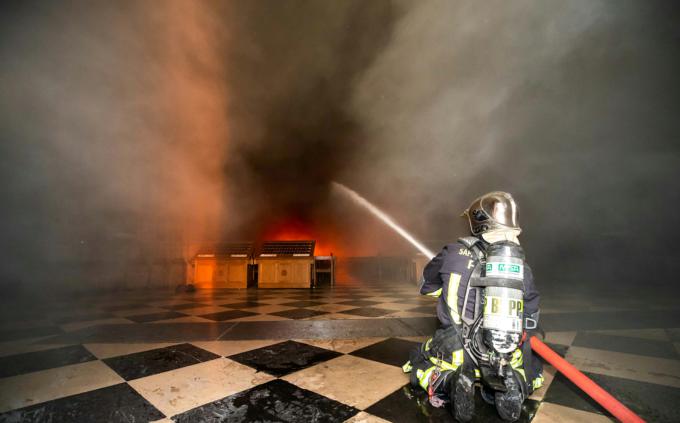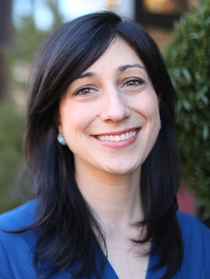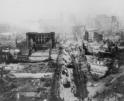
Culture
... real-time commentary and very public processing, analyzing and theorizing -- before facts are known and sufficient time has passed for reflection -- can sow confusion and hurt.

Ureneck
On April 15, I joined countless numbers of people whose eyes were glued to the live video of Notre Dame Cathedral in flames. As with other events of mass destruction -- like 9/11 and the Boston Marathon bombing -- I had trouble registering that the images I was seeing were real.
Social media has changed the way we experience and process these types of tragedies. On the positive side, these platforms can help us feel less alone. But they can also exacerbate anxiety.
The danger is that real-time commentary and very public processing, analyzing and theorizing -- before facts are known and sufficient time has passed for reflection -- can sow confusion and hurt. Grief in the digital age feels terribly inhumane.
While beautiful images circulated of Catholics prayerfully singing to the mother of God and stories were shared of conversions that took place after visits to the cathedral, there were also defensive and presumptuous takes on the meaning of both the place and the fire.
My grief was doubled by witnessing the missed opportunities for Catholics to thank those who were expressing solidarity with us in our sorrow. Some of the faithful responded by declaring that the destruction of Notre Dame symbolized the crumbling of the Catholic faith in Europe, which went over like a big "We told you so."
Others got angry at reporters who focused more on the building's significance to French identity and history rather than its primary meaning as a sacred space where God is present in the tabernacle.
I found the responses of Bishop Robert E. Barron and Pope Francis to be a welcome salve: they affirmed the natural attraction of so many people, secular or otherwise, to Notre Dame.
It was as if they were presenting on a global stage the claim made popular by Father Luigi Giussani that every person has a "religious sense," though they may not know from where it comes or to whom it points.
And Bishop Barron speculated on MSNBC that if you "scratched the surface a bit (in France), you are still going to find a Catholicism that's alive."
Some people asked how Catholics could mourn for a building and not for immigrants and refugees or other marginalized populations. They asked how the Church could spend money on cathedrals with the poor still in our midst. I did not see as many defensive responses to these questions, but neither did I see the answer that seemed most obvious to me.
Gothic churches have a way of raising our minds and hearts beyond time and toward eternity, so that we "think of what is above" (Col 3:2). I personally could not walk the aisles of Notre Dame as a pilgrim without feeling a profound sense of my own smallness juxtaposed with God's grandeur.
The Catholic faith that inspired Notre Dame's construction and that has been nourished within its walls includes a particularly radical and provocative claim: that when God looks at every human person, he does not see smallness; he sees a reflection of his very self.
God sees, as Pope Francis has said, "his masterpiece." The place itself is dedicated to God's magnum opus.
That is what a building like Notre Dame teaches us: that even the most astonishingly beautiful, complex and magnificent cathedrals are no match for God's handiwork in creation, the pinnacle of which is the human person.
That is why the most precious thing that was preserved in the fire -- even more than the rose windows, artwork and relics -- were the pilgrims and firefighters.
It is why Catholics profess that as sad and tragic as the destruction of Notre Dame is, the death of each immigrant and refugee in a capsized boat, the death of every unborn child in the womb by abortion, the neglect of the intellectually and physically disabled or people who are homeless that leads to their demise -- these are infinitely more tragic, infinitely more painful to bear -- or at least, they should be.
How different life would look on and offline if we lived as if we actually believed that.
For more than 800 years, the cathedral of Notre Dame has been one of the greatest teachers of the faith. This week's fire revealed that it still has lessons for us.
- Elise Italiano Ureneck, associate director of the Center for the Church in the 21st Century at Boston College, writes the “Finding God in All Things” column for Catholic News Service.
Recent articles in the Culture & Events section
-
Boston and the nation respond to the San Francisco Earthquake of 1906Thomas Lester
-
See you in the storyLaura Kelly Fanucci
-
'Dignitas' and the mediaRussell Shaw
-
Scripture Reflection for April 14, 2024, Third Sunday of EasterDeacon Greg Kandra
-
St. Helena's House is established in the South EndThomas Lester


















